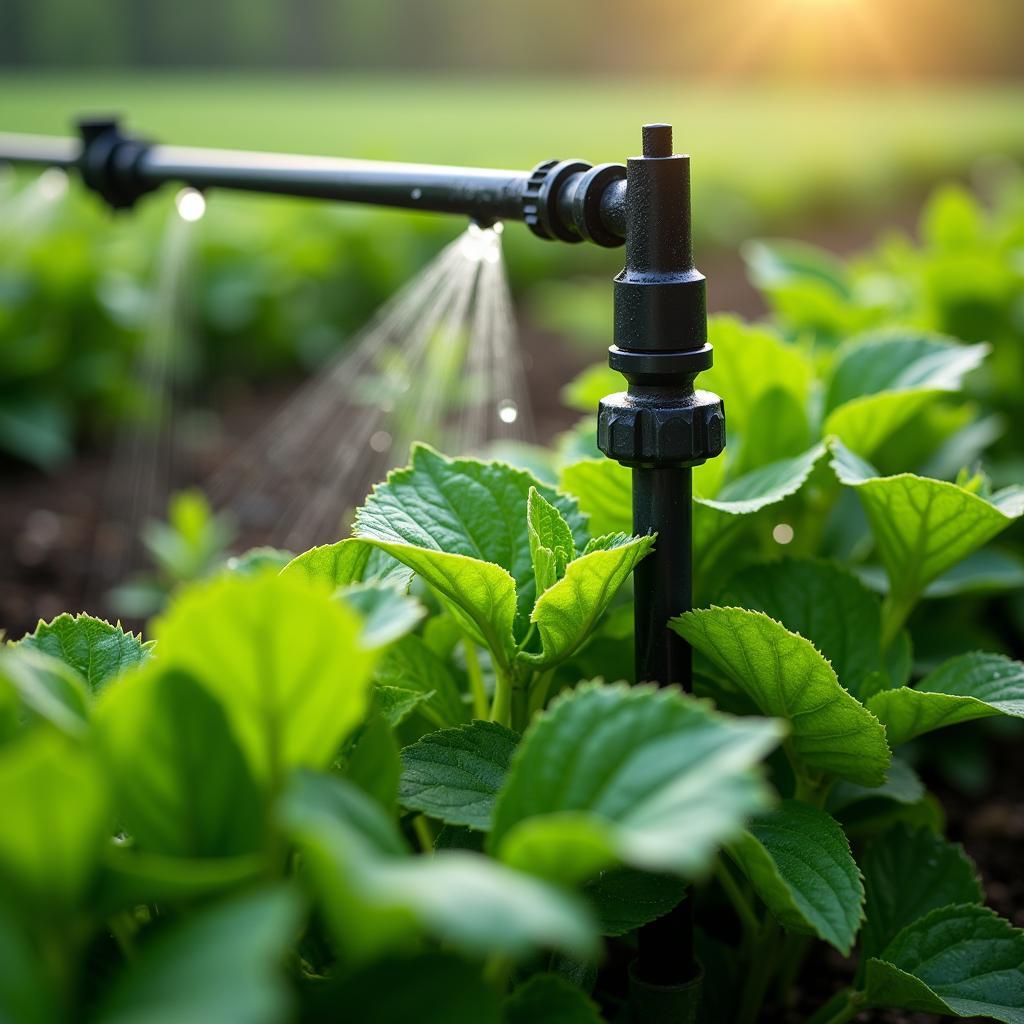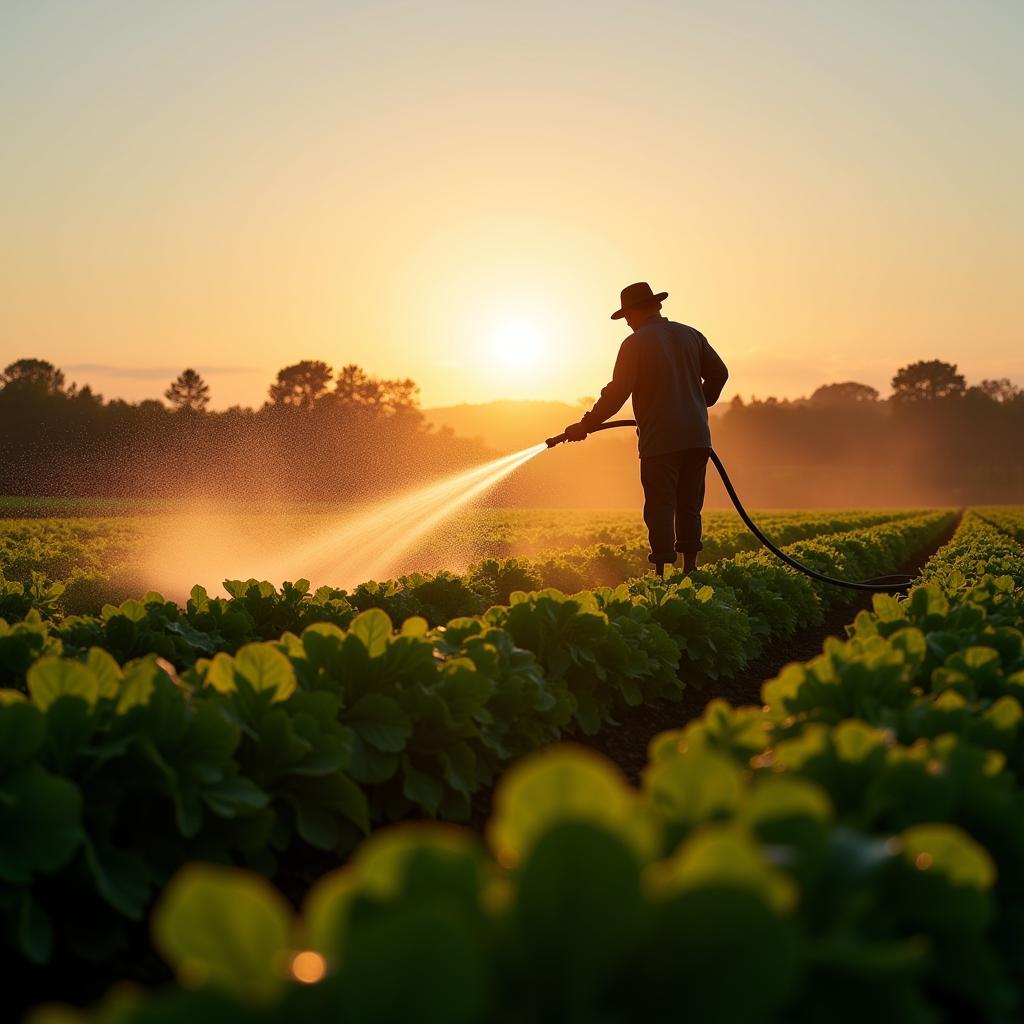Food Plot Watering is a critical aspect of successful food plot management. Understanding the nuances of watering, from the frequency and amount to the best methods, can significantly impact the health and productivity of your plots, ultimately attracting more wildlife. Let’s delve into the essential techniques and strategies for effectively watering your food plots.
Choosing the right watering method depends largely on the size of your food plot and your available resources. For smaller plots, a simple watering can or hose might suffice. However, larger plots often require more sophisticated irrigation systems. Check out our guide on rye food plot for specific watering tips for this popular food plot choice.
Why is Food Plot Watering So Important?
Proper food plot watering is crucial for seed germination, plant establishment, and overall plot health. Insufficient watering can lead to stunted growth, reduced yields, and even complete crop failure. Conversely, overwatering can also be detrimental, leading to root rot and other diseases. Finding the right balance is key to maximizing your food plot’s potential. What are the key factors that influence your watering schedule?
Factors Influencing Watering Needs
Several factors influence the watering needs of your food plot:
- Plant Type: Different plants have different water requirements. Research the specific needs of the species you’re planting.
- Soil Type: Sandy soils drain quickly and require more frequent watering than clay soils, which retain moisture longer.
- Climate: Hot, dry climates necessitate more frequent watering than cooler, more humid regions.
- Rainfall: Natural rainfall can supplement your watering efforts, but don’t rely on it entirely. Monitor rainfall patterns and adjust your watering schedule accordingly. Learn about strategies for how to water food plots with no rain in our dedicated guide.
- Time of Year: Newly planted seeds and seedlings require more frequent watering than established plants.
 Drip irrigation system watering a food plot
Drip irrigation system watering a food plot
Effective Watering Methods for Food Plots
There are several effective watering methods for food plots, each with its own advantages and disadvantages. Choosing the right one for you depends on your individual circumstances.
Drip Irrigation: A Precise Approach
Drip irrigation delivers water directly to the plant’s roots, minimizing water waste and maximizing efficiency. This method is ideal for larger food plots and can be automated for convenience.
Sprinkler Systems: Covering Larger Areas
Sprinkler systems are effective for watering large areas quickly and evenly. However, they can be less efficient than drip irrigation, as some water is lost to evaporation.
Hand Watering: A Hands-on Approach
Hand watering is suitable for smaller plots and allows for precise control over water application. However, it can be time-consuming and labor-intensive.
“When choosing a watering method, consider the size of your plot, your budget, and the availability of water resources,” advises Dr. Sarah Miller, a leading agronomist specializing in wildlife food plots.
Watering Frequency and Timing
How often and when you water your food plot is just as important as the method you use. Aim to water deeply and less frequently, encouraging deep root growth. The best time to water is early morning or late evening to minimize water loss through evaporation.
 Watering food plot in the early morning
Watering food plot in the early morning
Monitoring Soil Moisture
Regularly monitoring soil moisture is essential for determining when to water. You can use a simple finger test to check the moisture level a few inches below the surface. If the soil feels dry, it’s time to water.
“Don’t wait until your plants show signs of stress before watering. By then, it may be too late to prevent damage,” cautions Dr. Miller.
Maximizing Water Efficiency in Food Plots
Beyond choosing the right watering method and schedule, several strategies can help maximize water efficiency in your food plots:
- Soil Improvement: Amending the soil with organic matter, such as compost, can improve its water-holding capacity, reducing the need for frequent watering. Consider adding acid loving plant food for certain plant types.
- Mulching: Applying a layer of mulch around your plants can help retain moisture, suppress weeds, and regulate soil temperature.
- Water Harvesting: Collecting rainwater in barrels or other containers can provide a supplemental water source for your food plots.
Conclusion
Food plot watering is an essential aspect of creating a thriving and productive plot. By understanding the factors that influence watering needs, choosing the right watering methods, and implementing water-saving strategies, you can ensure your food plots attract and sustain wildlife throughout the season. Mastering food plot watering requires diligence and observation, but the rewards are well worth the effort. Check out our recommendations for the best food plot for spring planting to get started.
FAQ
- How often should I water my food plot? This depends on various factors such as plant type, soil type, and climate. Monitor soil moisture regularly to determine watering frequency.
- What is the best time of day to water? Early morning or late evening are ideal to minimize evaporation.
- Can I overwater my food plot? Yes, overwatering can lead to root rot and other problems.
- What are some signs of underwatering? Wilting, stunted growth, and yellowing leaves.
- What are some water-saving tips for food plots? Improve soil health, use mulch, and consider water harvesting techniques.
- What’s a good option for attracting larger game? Check out the information we have on big and beasty food plot.
- What if I don’t have access to a traditional water source? Explore our guide on how to water food plots with no rain for alternative methods.
Need help with your food plots? Contact us! Phone: 02437655121, Email: minacones@gmail.com or visit us at 3PGH+8R9, ĐT70A, thôn Trung, Bắc Từ Liêm, Hà Nội, Việt Nam. We have a 24/7 customer service team.